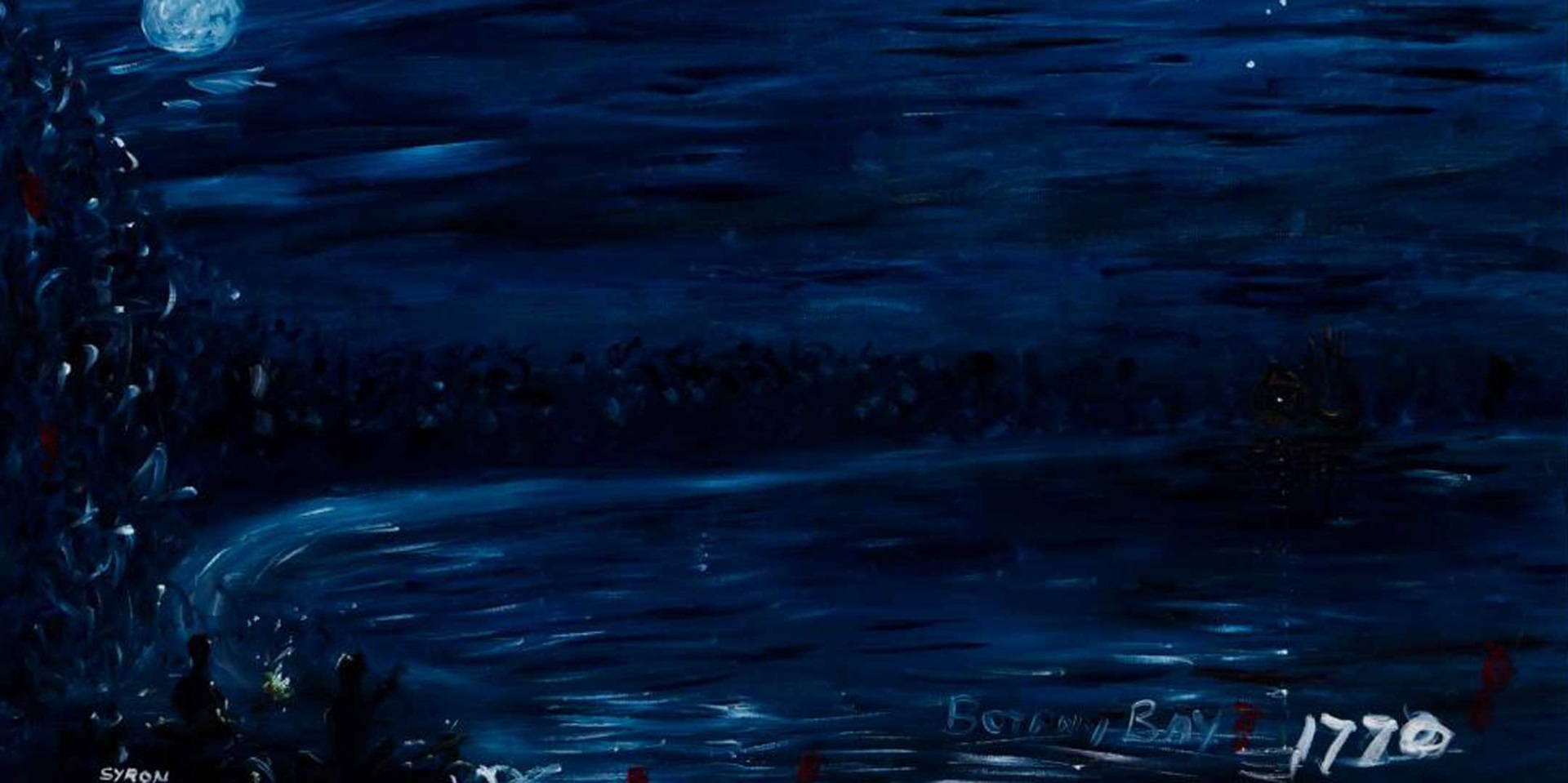Overview
James Cook in the Endeavour mapped the east coast of Australia in 1770. The maps and his encounters with Aboriginal people lead to Britain establishing the Australian colony and taking over the homelands of Aboriginal and Torres Strait Islander peoples.
Students use artworks from the Museum Collections to investigate the nature of contact from an Indigenous perspective.
Key inquiry question:
What were the impacts of Cook’s voyage and subsequent colonisation of Australia on Aboriginal and Torres Strait Islander peoples?
Conduct a class reading of The Rabbits by John Marsden and Shaun Tan. The story reflects British settlement and colonisation as portrayed by rabbits and possums with strong visual and literal elements. Conduct a class discussion on the way the story tells the story of colonisation. Develop questions about the impacts of colonisation and the way art and literature can retell the story from different viewpoints and perceptions.
As a class, engage and model how artwork can be used to extract meaning about the past from different perspectives.
- Observe contemporary artwork Botany Bay by Gordon Syron and identify features of the landscape and the activities taking place.
- Examine the techniques used and the ways the artist presents a holistic viewing of the scene in Kamay Botany Bay prior to the arrival of Cook in the Endeavour.
- Investigate images of Kamay Botany Bay today. How is it similar and different?
Closely examine the Colonial Wallpapers – Mantles of Perception by Helen S Tiernan. The artwork examines colonial history from an Indigenous perspective. It contains many features and images that represent impacts of British colonisation on Aboriginal and Torres Strait Islander people’s Country.
- As a class identify images from the four panels that represent impacts from colonisation.
- Students work in groups to conduct research on the impacts as represented in the artwork. Areas for investigation include; land rights and ownership, the Frontier Wars, changing landscapes, citizenship and civil rights, Aboriginal and Torres Strait Islander people’s dispossession, displacement, exploitation as well as their connection with Country and farming practices.
Observe the collection Heroes of Colonial Encounter also by Helen S Tiernan. This collection revisits the European view of colonial history presenting significant people of the colony as equals, painted using the same style and techniques. It challenges the way Aboriginal and Torres Strait Islander peoples are depicted as the 'primitive' or 'other' in colonial art.
- Students conduct research into the people presented in the portraits and the significant role they played in early contact and colonisation.
- Compare the portraits to traditional artworks from the past. Explain how the views and perspective of artists and authors create a ‘truth’.
Students communicate their learning with the ‘step in’ routine to consider different perspectives and points of view. Select a character from one of the artworks by Helen S Tiernan. Write a monologue, or diary excerpt or role play a scene to express the characters experiences and emotions. Share your experiences with the class.
Main image: Botany Bay, © Gordon Syron, 2012. ANMM Collection 00054535
